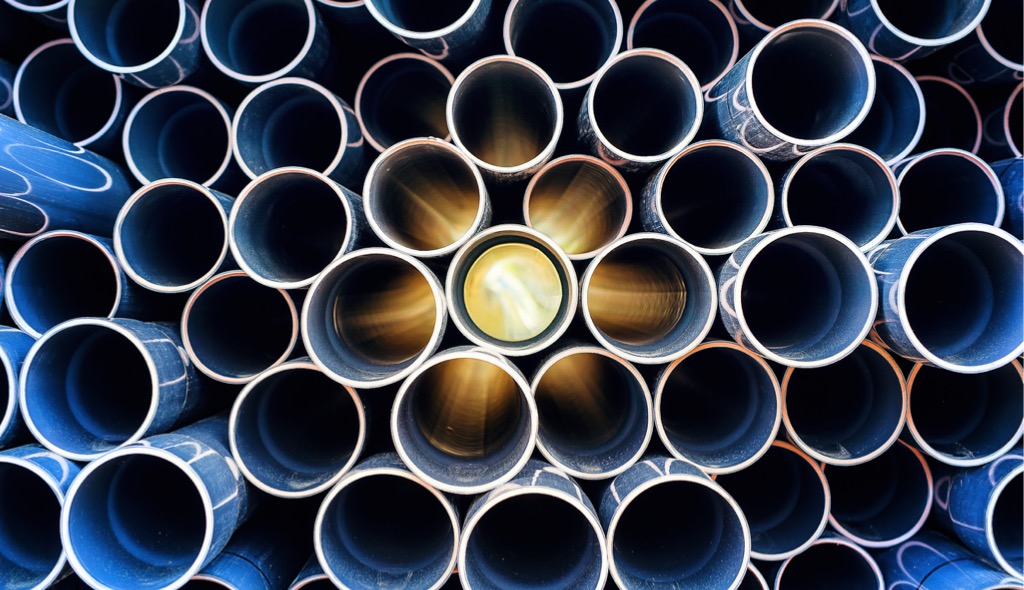
Like their colleagues across the manufacturing spectrum, the building products industry was hit hard by Covid-19. However, the industry was already dealing with many of the same pain points before the pandemic. Some leaders saw it as a trigger to face down their demons and embrace predictive technologies. We should watch and learn.
Building On What They Have
A sleeping giant is waking up… While largely twinned with that least digital of industries, construction, more and more leaders in the building supplies industry are now ready to leverage the power of innovation. They realize if they don’t act now, they will only lose more opportunities (i.e., revenue).
Of course, all manufacturers are facing an array of challenges as fall-out of the global pandemic: disruptions in the supply change, erratic supply and demand, labor fluctuations – not to mention ever-tightening deadlines and margins. But the building supplies industry was already facing these challenges long before the pandemic. Backlogs, backlogs, backlogs.
But yes, Covid-19 made it all worse.
Know The Future
However, pre-existing pain points may be the very reason why some building product manufacturers are quicker in switching gears to apply predictive technologies.
Already a dozen major players are actively expanding their digitization efforts. Change is afoot. And below we’ve outlined some of the ways the building supply leaders are proactively taking charge of their own futures.
1) Building Product Manufacturers Are Getting Serious About Changing The Status Quo
Traditionally, the decision-makers within manufacturing were always fighting fires. Few had time to talk or strategize. But now, they are proving to be a wonderful audience. They are taking the time to figure out what will work best for their particular situation. They want to produce at maximum capacity with the machines they have. They are interested in how to make a new predictive maintenance solution part of their workflow.
2) They Are Doing Their Research
When it comes to predictive maintenance, building supply leaders are looking carefully at all the options – thermography, ultrasound, vibration, etcetera. At the same time, they know they can’t afford to hire in-house specialists to cover all these possibilities. They need partners.
3) They Regard All Machinery as Essential (aka Time is Money)
If you are working a continuous lockstep line, as is often the case with building supplies, every machine on that line can be considered a critical asset. One minor failure can create a major catastrophe. So, building supplies manufacturers are looking for a full-stack solution to keep all their machines humming.
4) They Have a Concrete Challenge: Sustainability
A specific challenge can bring focus. New laws to curb climate change will affect many parts of the building products industry, but none more than cement production which emits 8% of the world’s carbon dioxide. Waste, rework and downtime need to be minimized. All machines need to be maximized for efficiency. Failure is not an option.
5) They Are Doing the Math
Whether you are out to maximize sustainability, safety and/or production efficiency, there are costs when a machine goes down – costs that add up over hours, days, weeks, months, years. And the next day it can happen to another machine – or to several across multiple plants. Forewarned is forearmed. When you get early warning of an impending failure and act on it, the ROI will be fast and dramatic.
6) When There’s a Demand, You Try Your Damn Best to Supply
Covid-19 brought on remodeling fever among home owners everywhere. People weren’t travelling and had some extra cash, so millions poured that cash into DIY. Building product manufacturers – who were likely already capacity constrained and had a backlog of customer orders – saw a lot of potential profit go up in smoke by not being able to respond to this demand. They don’t want to make the same mistake again. They want to make every production hour count.
7) Their Business Is Already Complex Enough
Coping with the complexity of building materials’ production processes is another big challenge. The industry produces a dizzying array of products – glass, tiles, bricks, etc. – each with its own unique specifications and production processes. Furthermore, each individual order has different requirements in terms of color, size, style, and other characteristics. And in a complex world, you look for the simplest solution.
8) Accelerated Innovation
In terms of materials and techniques, we are seeing exciting innovations across the industry. For example, digitization coupled with IoT technologies means we can not only streamline manufacturing processes but also better show how a particular material performs in terms of energy use and carbon footprint. There are countless Advanced Building Materials (ABMs) coming out that have amazing properties – everything from nanomaterials to self-healing concrete. Meanwhile, the trend towards standardization and modularity means not only building supplies but whole buildings will come out of the factory.
Transparency and traceability can also offer big wins – and not only in terms of tracking CO2 emissions across the value chain. They might even create future building supplies. For example, a materials passport, such as Madastar, means that a building can be easily mined for its composite parts when it’s no longer usable. As the Dutch architect Thomas Rau says: “waste is material without an identity”.
And it should be noted: innovation arises from innovative partnerships – people with shared interests coming together.
9) A True Desire for Positive Transformation
With all the issues outlined above, leaders in the building products industry now have a true desire to transform their organization. They know change is needed and it should cover everything from a digital transformation strategy for their manufacturing operations, to making sure not only their customers are happy but also their employees.
And once they find there’s one proven turnkey solution covering everything from site evaluation, to installation and integration, to change management and follow-up, they are also happy to deploy it.
Want to talk more about delivering on-time every time? Reach out!






